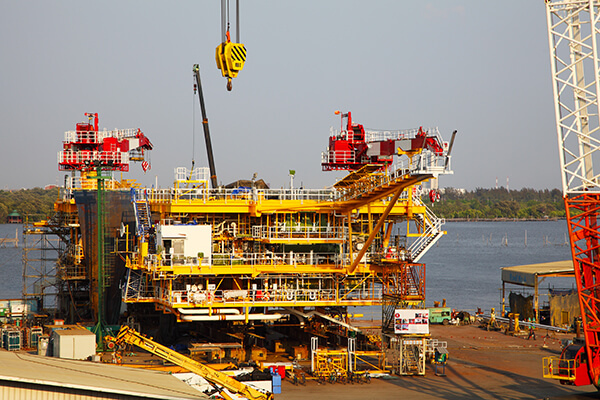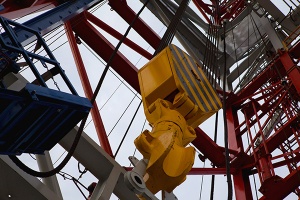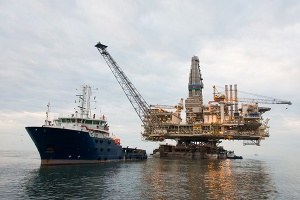Tag Archive for: oil
Oil Extends Decline as OPEC Splits Prevent Deal to Curb Supply
/NewsOil declined for a second day as OPEC’s internal disagreements undermined efforts among major suppliers to reach an agreement in Vienna on trimming output to support prices.
Futures fell as much as 1.1 percent in New York after sliding 2.1 percent at the end of last week. The Organization of Petroleum Exporting Countries ended a meeting on Friday without reaching a deal on country quotas, according to delegates who took part in the discussions. Non-OPEC nations finished talks with the group on Saturday without any supply commitments, Brazil’s Oil and Gas Secretary Marcio Felix said. Brazil attended as an observer.
Oil has fluctuated near $50 a barrel amid uncertainty over whether OPEC can implement the first supply cuts in eight years at its official November meeting. As the gathering opened in Vienna last week, OPEC Secretary-General Mohammed Barkindo warned of the consequences if producers don’t follow through on an agreement to reduce output. The price recovery has already taken far too long and suppliers can’t risk delaying it further, he said.
“Talks over the weekend make it seem less likely there will be an agreement on production cuts,” said Ric Spooner, a chief market analyst at CMC Markets in Sydney. “The market has probably made a fair bit of the adjustment, but I wouldn’t be surprised to see oil fall further into the $47 range.”
West Texas Intermediate for December delivery dropped as much as 53 cents to $48.17 a barrel on the New York Mercantile Exchange, and was at $48.44 at 2:48 p.m. in Singapore. The contract fell $1.02 to $48.70 on Friday. Total volume traded was about 4 percent above the 100-day average. Prices are set for a third monthly gain, up 0.4 percent in October.
OPEC Meeting
Brent for December settlement, which expires Monday, lost as much as 42 cents, or 0.8 percent, to $49.29 a barrel on the London-based ICE Futures Europe exchange after falling 1.5 percent Friday. Front-month prices are up 0.7 percent this month. The global benchmark traded at a premium of $1 to WTI. The more-active January contract slid 27 cents to $50.41 a barrel.
OPEC agreed in Algiers last month to trim output to a range of 32.5 million to 33 million barrels a day and is due to finalize the deal at its Nov. 30 summit in Vienna. The accord helped push prices to a 15-month high above $50 a barrel earlier this month, although they have subsequently fallen amid doubts the group will follow through on the pledge. More than 18 hours of talks over two days in the Austrian capital this weekend yielded little more than a promise that the world’s largest producers would keep on talking.
Some progress was made at the Friday meeting on the methodology to be used for allocating output quotas to OPEC members, said one delegate, who asked not to be identified because the talks were private. Russia reiterated that it’s willing to freeze production, rather than cut, but only if there is an OPEC agreement first, according to participants in Saturday’s meeting.
Oil-market news:
-
Iraq published data showing a rare level of detail for its oil production and exports as it seeks to be excluded from OPEC’s planned output cuts because of its war with Islamic militants.
-
Libyan crude production increased to 640,000 barrels a day, according to a National Oil Corp. official.
-
China’s oil output slump shows no signs of abating as the country’s state-run energy giants hold back spending amid the crash in prices.
-
Rigs targeting crude in the U.S. fell by 2 to 441 last week, according to data from Baker Hughes Inc. Friday.
Copyright: Bloomberg
Oil Investors Ease Back as Market Steadies Before OPEC Talks
/NewsOil investors are playing it safe as OPEC hammers out the details of a deal to trim output.
Money managers reduced bets on falling prices to the lowest since May as oil held above $50 a barrel, prolonging a rally that began when the Organization for Petroleum Exporting Countries announced a deal to cut production to between 32.5 million and 33 million barrels a day. The group plans to finalize the agreement at a meeting in Vienna on Nov. 30.
“The shorts are not laughing off this OPEC deal anymore,” Phil Flynn, a market analyst at Price Futures Group in Chicago, said in a phone interview. “There’s a growing realization that there’s going to be a deal to lock in production. Things will be relatively calm until we get the agreements.”
Saudi Arabia’s Energy Minister Khalid Al-Falih said Oct. 19 that many nations are willing to join OPEC in cutting production. So far, Russia has said it’s considering taking steps to stabilize the market. Alexander Novak, the country’s energy minister, said Sunday that “many scenarios” are being discussed. Venezuelan President Nicolas Maduro, on a tour of oil-producing countries to boost support for the deal, said Oct. 21 he’s in favor of inviting the U.S. to the next OPEC meeting and creating an “alliance” of OPEC and non-OPEC nations.
“This week the market is in a pause after the run-up to $50,” said Michael Lynch, president of Strategic Energy & Economic Research in Winchester, Massachusetts. “There’s still a lot of question about what OPEC is actually going to do next month. Absent that, people are waiting for some more direction than we have now.”
In addition to slashing short bets in West Texas Intermediate crude by 21 percent during the week ended Oct. 18, hedge funds also reduced their long positions by 3.2 percent from a two-year high, according to the Commodity Futures Trading Commission. Net longs increased to the highest in two years.
Oil Inventories
WTI slipped 1 percent during the report week to $50.29 a barrel. The U.S. benchmark rose 0.1 percent on Monday to $50.91 as of 9:41 a.m. London time. Prices reached a 15-month high on Oct. 19 after government data showed U.S. crude stockpiles fell to the lowest level since January.
U.S. stockpiles dropped 5.25 million barrels to 468.7 million in the week ended Oct. 14, according to the Energy Information Administration, after reaching 512.1 million in late April.
“$50 will be the floor through the OPEC meeting, barring some spike in the dollar,” Price Futures Group’s Flynn said. “With U.S. inventories falling at a rapid pace, the prospect of a cut or freeze has real consequences.”
In other markets, net-bullish bets on gasoline rose 9.4 percent to 40,085 contracts, the highest since March 2015, as futures climbed 1.5 percent in the report week. Ultra low sulfur diesel net-longs fell 7 percent to 8,439. Futures slipped 1.2 percent.
WTI held above $50 a barrel even as Russia’s energy minister said the country may produce a new oil-output record next year. As OPEC members head into technical meetings Oct. 28-29, investors will be watching for details on country allocations. Iraq should be exempted from cutting production, Oil Minister Jabbar Al-Luaibi said Sunday.
“The market just wants to see the proof in the pudding,” said Carl Larry, director of oil and gas at consultant Frost & Sullivan in Houston. “We got to $50. That’s as good as it’s getting, going into the November election and the actual OPEC meeting.”
Copyright: Bloomberg.
Russian, Gulf Arab Oil Ministers Meet as OPEC Cut Looms
/NewsRussia’s energy minister met with counterparts from Saudi Arabia and other Arab Gulf oil-producers to discuss steps to stabilize crude markets amid OPEC’s drive to win cooperation from the biggest supplier outside the group in limiting output to prop up prices.
Ministers from Saudi Arabia, Kuwait, Bahrain, Qatar and the United Arab Emirates gathered in Riyadh for oil talks at the offices of the Gulf Cooperation Council secretariat. Russian Energy Minister Alexander Novak met with them later on Sunday for a separate round of talks and was expected to speak afterward at a news conference. Oman was the only one of the GCC’s six members not attending.
“Oil markets are on the way to being re-balanced,” Saudi Arabia’s Energy and Industry Minister Khalid Al-Falih said at the start of the GCC meeting. “Low oil prices are putting pressure on GCC countries’ development plans.” Russia was invited to attend the Gulf ministers’ talks, he said. “We are working with Russia and other oil producers to stabilize the market.”
Novak is set to meet representatives of the Organization of Petroleum Exporting Countries on Monday in Vienna for talks that could include production cuts, and officials from Russia and Saudi Arabia will hold bilateral discussions later this month. While Russian President Vladimir Putin has pledged to cooperate with OPEC, he’s been vague about whether the country will trim output or just freeze production at September’s post-Soviet record.
OPEC is seeking to attract other producers to join the plan it agreed to last month at a meeting in Algeria to put into effect the group’s first output cuts in eight years. Crude plunged to a 12-year low in January, squeezing the budgets of producers from Venezuela to Saudi Arabia. The price slide led OPEC to abandon its two-year-old Saudi-led policy of allowing members to pump as much as they could in an effort to protect market share.
“We hope that they can reach an overall agreement on which Russia and other non-OPEC producers will join and cooperate with OPEC members,” Iranian Oil Minister Bijan Namdar Zanganeh told reporters on Sunday in Tehran.
Iraq asked OPEC for an exemption from participation in any cuts, Oil Minister Jabber Al-Luaibi said Sunday at a news conference in Baghdad. He cited Iraq’s war against Islamic militants as the reason the country should be grouped with Iran and Nigeria as members not required to contribute to the collective cuts OPEC agreed on last month in Algeria.
Record Output
Russia is producing about 10.9 million barrels a day on average this year, according to Energy Ministry data. Officials have emphasized the nation’s ability to keep pumping; the latest draft of Russia’s energy strategy sees a potential increase in annual production from 534.1 million metric tons last year to 555 million tons, or 11.1 million barrels a day, by 2020.
OPEC’s 14 members pumped a record 33.75 million barrels a day in September, with the Saudis accounting for 10.58 million barrels, according to data compiled by Bloomberg. Output in Saudi Arabia, the group’s biggest producer, fell short of the 10.66 million-barrel-a-day record in July, the data compiled by Bloomberg show.
Brent crude, the global benchmark, has gained almost 40 percent this year, trading at about $52 a barrel last week. OPEC is trying to determine which members will reduce their output and by how much, with details to be made final at the group’s Nov. 30 meeting.
Copyright:Bloomberg
What is a Fiscal nonconformity bond?
/Our CoreFiscal Bonds are required by the Tax Authority to ensure compliance with taxpayer obligations of a procedure in the event of a disagreement.
Within the range of the offer in this sector, we find the nonconformity fiscal Deposit, which guarantees the payment of taxes, fees, fines, licenses, etc., while the appeal of inconformity requested by the taxpayer, to have resolved this resource can suspend the administrative enforcement proceedings (AEP) preventing seizure of property or immobilization of bank accounts.
In NRGI Broker, we know that Fiscal Bonds are needed quickly. That is why we are an expert team in bonds that will provide comprehensive solutions, with proven products, which are tailored to suit your needs, just as we maintain partnerships with major surety companies at national and international level, we it allows for various options in time and cost to provide the best support to our customers.
Contact us, we are here to help:
[email protected]
(55) 9177.2100
Analysts: Industry Rebound for WTI to Take Shape As $65 Oil in 2018
/NewsOil and gas industry conditions stand to gain strength after 2017, in a confluence of growing demand and a collapse in no-shale capacity, according to an end-of-quarter report from Morningstar in Chicago.
“We are increasingly bullish on oil prices rallying in the medium term, and have raised our WTI forecast to $65/bbl for 2018, which is the level we believe is required to drive a large-scale recovery in U.S. shale activity,” wrote analyst Joe Gemino. “Even so, the strength of U.S. shale is lurking beneath the surface: Our analysis shows that the recent uptick in rigs and falling shale decline rates together are enough to stabilize U.S. crude production within six months.”
Gemino also said that if U.S. activity doesn’t scale back, production will begin to grow again in 2017. That highlights the strength of tight oil in the country, he said, which would limit a commodity price rebound.
“Should a price rally ensue, it is far too strong to not overheat and eventually snuff out any future oil price rally. We remain bearish on oil prices for the longer term, and we reiterate our mid-cycle oil price outlook of $55 WTI ($60 Brent),” he said.
But keeping the above in mind, Gemino said, there is more evidence that shale producers can survive – perhaps even thrive – at lower prices than assumed in earlier forecasts.
Through labor cost-cutting and efficiency advances in technology, shale producers have managed to reduce production costs, which makes drilling profitable even at lower commodity prices. In February, some producers made headlines suggesting that “$40 is the new $70” per-barrel price needed to drill, but that has yet to fully manifest.
Copyright: Rig Zone
Petrobras Says Deep-Water Opening Luring Big Oil to Brazil
/NewsInternational oil companies are reaching out to Brazil after it opened its most promising offshore region to increased competition, a move welcomed by Petrobras Chief Executive Officer Pedro Parente as he seeks partners to spread investment costs.
Producers rushed to contact Houston-based Brazilian officials last week after Congress removed a requirement that Petrobras control operations at all new projects in an area known as the pre-salt, Parente said. It’s the most investor-friendly change in regulation since the 1997 oil law that ended the company’s monopoly in Brazil.
“Our foreign ministry representation unit in Houston, in the very following day, received seven manifestations of interest of big companies,” Parente said at Bloomberg’s offices in New York City.
The policy shift comes as the state-controlled producer is selling assets to slash debt, which stood at $125 billion in the second quarter. The Rio de Janeiro-based producer has a group of more than 30 projects worth about $40 billion that it is marketing to potential buyers, Parente said.
Allowing others to control drilling and production in the potentially oil-rich pre-salt will provide a larger group of offshore operators for Petrobras to team up with at upcoming licensing rounds. Foreign oil companies haven’t had a chance to bid for licenses to operate in the pre-salt since before anyone knew how vast the reserves were.
The nationalistic oil policies were put in place in 2010 when the government moved to put Petrobras in control of the biggest group of offshore discoveries this century. This limited access to bidding with Petrobras as a minority partner, or trying to buy into an existing license awarded under previous rules.
Pre-salt oil was formed when the South American and African continents began separating more the 100 million years ago. The repeated flooding and evaporation of salt water in what is now the South Atlantic created a layer of the mineral as thick as 2,000 meters that blankets the deposits. The biggest discovery in the area, Libra, holds an estimated 8 to 12 billion barrels of recoverable reserves.
Interest in the region is strong. Petroleo Brasileiro SA, as it is formally known, recently sold its stake in a pre-salt concession to Statoil ASA for $2.5 billion. The government is planning to offer new pre-salt exploration acreage in 2017, and the new rules let Petrobras bid more selectively as it looks to contain capital expenditures. The company is likely to continue shedding staff in the next two years, said Parente.
Higher-than-expected output at the pre-salt has cut Petrobras’s break-even cost to $40 a barrel, and the company can lower it further, said Parente. The company will continue efforts to reduce spending even if oil prices rebound, he said, adding that he sees oil at $50 to $55 a barrel next year.
“Productivity of the pre-salt fields in Brazil is amazing,” said Parente. “Some wells produce 40,000, 50,000 barrels a day per well. So I think this is what is in the mind of these companies.”
Petrobras is also looking to bring in partners for its refineries, which posted losses in four out of the past five years. The “ideal” partner would supply knowledge, not just money, according to Parente.
The influx of partners, asset sales and increased competition in offshore fields from foreign producers will force Petrobras to become more efficient, the company’s top managers said.
“Five to ten years from now the market landscape will be completely different,” said Nelson Silva, Petrobras’ head of strategy who was at the interview. “It will put pressure in us to improve.”
Copyright: Bloomberg
At $500 Million A Pop, It’s An Oil Gamble That Has No Precedent
/NewsIn a far corner of the Caribbean Sea, one of those idyllic spots touched most days by little more than a fisherman chasing blue marlin, billions of dollars worth of the world’s finest oil equipment bobs quietly in the water.
They are high-tech, deepwater drillships — big, hulking things with giant rigs that tower high above the deck. They’re packed tight in a cluster, nine of them in all. The engines are off. The 20-ton anchors are down. The crews are gone. For months now, they’ve been parked here, 12 miles off the coast of Trinidad & Tobago, waiting for the global oil market to recover.
The ships are owned by a company called Transocean Ltd., the biggest offshore-rig operator in the world. And while the decision to idle a chunk of its fleet would seem logical enough given the collapse in oil drilling activity, Transocean is in truth taking an enormous, and unprecedented, risk. No one, it turns out, had ever shut off these ships before. In the two decades since the newest models hit the market, there never had really been a need to. And no one can tell you, with any certainty or precision, what will happen when they flip the switch back on.
It’s a gamble that Transocean, and a couple smaller rig operators, felt compelled to take after having shelled out millions of dollars to keep the motors running on ships not in use. That technique is called warm-stacking. Parked in a safe harbor and manned by a skeleton crew, it typically costs about $40,000 a day. Cold-stacking — when the engines are cut — costs as little as $15,000 a day. Huge savings, yes, but the angst runs high.
“These drillships were not designed to sit idle,” said Willard Duffey Jr., an electrician who spent two decades with Transocean. The Deepwater Pathfinder, a ship he had served on for four years, was among the first to be parked off the Trinidad coast. The ship made the voyage there from the Gulf of Mexico about a year ago. Duffey was one of the last men aboard before the engines were turned off. He fretted constantly — “did I do everything I could?” — as he flew back home to Ore City, Texas. “To get the Pathfinder back up would be very difficult to guess actually,” he said.
These rigs, once famously labeled the “new Ferraris” of the oil world, are no ordinary ships. Carrying a price tag of about $500 million a piece, they are loaded bow to stern with sophisticated, and very heavy, gadgetry.
Below the water line sit a half-dozen Rolls-Royce thrusters, coordinated by satellite to push against each other and keep the rig hovering on top of wells lying as much as two miles underwater. Up on deck, there’s a robot that can be launched to work a screwdriver or a wrench under water pressures on the seabed that no human could survive. And the 220-foot tall, dual-activity oil-drilling derrick is capable of simultaneously lifting and lowering gear down to the seafloor, including a diamond-studded drill bit, a five-story-tall blowout preventer and a heavy-drill pipe. The derrick can handle as much as 5 million pounds of gear — equal to the weight of some 20 adult blue whales — going up and down at one time.
All of these fancy elements, though, are what make turning the ships back on so daunting. Chip Keener, whose rig-storage consulting firm advises Transocean, compares it to what would happen if you left a high-tech new car parked in the garage for months. The battery would be dead, sure, but then there’d also be a slew of pre-sets to reprogram. On a drillship, there are thousands and thousands of pre-sets. And unlike your car, those on a ship are essential to its proper functioning. “It’s a big deal,” says Keener.
For now, cold-stacking has been a huge success for Transocean, a long-time Texas powerhouse that’s based today in Switzerland. (It owned the offshore rig that BP Plc was operating in the 2010 Gulf of Mexico disaster.) The company reported a profit of $77 million in the second quarter, surprising investors who had been bracing for a loss. Its stock price jumped 8.5 percent in minutes the next morning in New York.
“I don’t think a simple congrats on this quarter’s cost beat is really sufficient,” one stunned analyst, Scott Gruber at Citigroup, told Transocean executives on a conference call. “A big kudos to all of you.”
Still, there are any number of deepwater rig operators unwilling to turn the engines off: Noble Corp., Rowan Cos. and Pacific Drilling, to name a few. They’re paying anywhere from $30,000 to $50,000 a day to store their out-of-work ships. Chris Beckett, the CEO of Pacific Drilling, said the unknowns of cold-stacking are just too great and the cost to keep the ships running too manageable — about $10 million a year — to turn them off. He likes the peace of mind that comes with this approach. “We don’t worry about how you start them again,” Beckett said in an interview in the company’s Houston headquarters.
The cold-stack versus warm-stack dilemma doesn’t figure to go away anytime soon.
Nearly half of the world’s available floating rigs are out of work today, and most observers expect that number will climb further. Not only are the drillship operators’ customers — the likes of ConocoPhillips and Total SA — slashing spending in high-cost offshore areas and canceling work contracts early, but new rigs that were ordered in recent years keep rolling out of shipyards. Bloomberg Intelligence estimates as much as $56 billion worth of offshore rigs, capable of drilling in everything from shallow water to oceans more than two miles deep, are still under construction.
It’s a far different mood than a couple years ago, when crude was hovering around $100 a barrel and just about every single deepwater rig on the planet was in use. Transocean’s Pathfinder was in many ways the symbol of those go-go days. In mid-2014, just as oil prices were peaking, Eni SpA agreed to pay Transocean $681,000 a day to lease the ship. It was one of the richest drilling contracts ever, an amount that’s about triple the rate a deal signed today would fetch. By the end of that year, with oil in freefall, Eni canceled the contract four months before it was due to expire.
Things are quiet on the Pathfinder these days. The water is calm off Trinidad, one of the top global destinations for drillship storage. A handful of seamen recruited locally make the rounds, in part to ward off criminal elements. They’re joined every once in a while by Transocean mechanics sent in to monitor the ships. The company’s chief operating officer, John Stobart, recently dropped in to check them out himself. CEO Jeremy Thigpen said Stobart came away encouraged.
“He was really impressed with the preservation of all the critical components,” Thigpen said at an energy conference in New York this month. “His belief is, ‘Listen, we’re going to be able to reactivate these rigs in a timely and low cost manner.’”
Stobart’s going to have to wait for his chance. Oil, after having briefly rebounded above $50 in June, is slumping again. And Transocean seems prepared to be in Trinidad for a while. According to island officials, the contract that the company’s negotiating to lease out seabed space could extend through October of 2020.
Copyright: Rig Zone
What Does OPEC’s Freeze Talk Really Mean?
/NewsHeading into the home stretch before a highly anticipated OPEC meeting in Algiers next week, crude industry experts and non-OPEC members alike are opining on what may happen to crude production.
Dave Pursell, managing director and head of macro research at Tudor, Pickering, Holt & Co. in Houston, told Rigzone the production freeze idea is based largely on optics.
“But, they’re raising expectations that there will be an agreement,” he said. “I think they need to do something, and the challenges are less now than they were earlier this year.”
Oil prices have tumbled from more than $100 per barrel in 2014, as prodigious supply outsized demand. More recently, crude prices have hovered in the low $40s.
As Pursell explained, OPEC members Iraq and Libya can’t produce more oil, anyway, at least in the near term. Iraq needs significant capital investment to move forward, and Libyan production is struggling under the weight of political unrest.
“The reality is the only reason you can get a freeze is because people can’t grow. The only spare capacity in the world sits inside of Saudi Arabia and Libya. That doesn’t mean Iran and Iraq can’t grow over time, and the rest of OPEC can’t grow a little bit over time, but it takes a ton of capital,” he said. “There’s no spare capacity that could easily be brought on.”
Still, Pursell said that even if a production freeze agreement is mostly for show, it’s not meaningless.
“But it’s important ‘show’ in that shows they can agree to something. There’s this notion that OPEC is irrelevant and my argument is that if OPEC is irrelevant, how come I’m talking about them every day? And so if they’re going to eventually have to cut – which we don’t think they will – but if they do, you first have to have an agreement to not increase,” he said. “You have to agree on something, and then if you have to make a harder choice down the road that you have to cut, there’s more confidence that it could actually be implemented.”
Many analysts, including Pursell, have said a cut is unlikely, though. Russia recently said it’s off the table. The nation’s energy minister told UPI there are no proposals to slash crude production. Alexander Novak said one option under review would be to maintain production rates at current levels for the up to six months.
According to a new Reuters’ story anonymous sources have said Saudi Arabia would be willing to cut its crude production if Iran will cap its oil output. Iran has steadfastly said it won’t consider a freeze until it has ramped production back up to pre-sanction levels, but that may soon happen.
Copyright: Rig Zone
Stacked Oil and Gas Make Permian Deals Costly in Spite of Rout
/NewsOil prices are depressed, but Texas shale has never been more valuable.
A recent spate of land deals in the sprawling Permian Basin illustrates a counter-intuitive trend: Real estate in the country’s most active oil field is even more expensive today than it was before commodity prices crashed.
QEP Resources Inc. agreed to pay a price that works out to close to $60,000 per net acre in June for a slice of the Permian, in the basin’s priciest land deal on record.
That’s more than double the average $30,000 per net acre explorers paid for Permian land during the first nine months of 2014, when oil topped $100 a barrel, according to data from Citigroup Inc. Oil has been hovering at $45 to $50 per barrel since mid-August.
Over the past few months, at least four other explorers agreed to pay more than $30,000 per net acre to expand in the Permian: Concho Resources Inc., Parsley Energy Inc., SM Energy Co., and Silver Run Acquisition Corp., according to data compiled by Bloomberg.
“The valuations are pretty lofty,” said Bryan Lastrapes, managing director at Moelis & Co. “When you look at the prices being paid for a flowing barrel, they are higher than when oil was at $100.”
Unusual Geography
The obvious question: With oil so much cheaper today, why has Permian land become so pricey? There are a few explanations. The first comes down to the same reason a dingy is more valuable on a sinking ship.
“It’s about scarcity,” said Bruce Cox, global head of energy acquisitions and divestitures with Credit Suisse Group AG.
The Permian is one of the few places in the U.S. where drilling remains profitable amid low prices, thanks to its unusual geography, in which different layers of oil- and gas-soaked rock are stacked like layers in a cake, he said. An explorer can drill multiple horizontal wells after digging straight down.
“What you can’t find in most plays is the Permian hydrocarbon column,” Cox said. “Companies can drill two to four times as many wells over a 10-year development period” in the Permian than in other basins.
QEP Rationale
This is a key part of the rationale QEP used to justify the price it agreed to pay for the 9,400 net acres in the Permian in June.
The company told investors it sees a chance to drill more than 400 horizontal wells along four different benches of shale, more than a half-mile down, where it has already determined there is oil. It sees additional upside potential drilling riskier, wildcat wells on three other benches. So it isn’t buying just one field, but as many as seven.
That deal also addresses a perpetual critique from investors that QEP isn’t big enough in the Permian, by increasing its position there by 50 percent, Richard Doleshek, QEP’s chief financial officer, said in August.
“From a dollar-per-acre standpoint, we heard a lot of conversation about how that was a big number,” Doleshek said during a presentation at an oil and gas conference sponsored by Enercom Inc., according to a transcript compiled by Bloomberg.
“When you look at it on a target basis, it’s relatively reasonable,” he said. “It’s pristine acreage.”
Lower Costs
Another factor driving up Permian land prices is the fact that it has some of the lowest break-even costs in the world. The area has more than a half-dozen fields where drilling can stay profitable even when oil falls below $30 a barrel, according to data compiled by Bloomberg.
The oil rout has set off a land grab for that reason, said Ron Gajdica, co-head of energy acquisitions and divestitures with Citigroup.
“When oil prices were high, there was a high supply of acreage with economic drilling opportunities,” he said. “Now, in a $40 to $50 oil price environment, acreage with economic locations is scarcer. There are only a limited amount of opportunities and many of them are in the Permian.”
A couple of other things are driving up the price of Permian land. First, development costs have come down sharply during the downturn, thanks to lower service costs, technological advances and more efficient techniques, Gajdica said. That means explorers can justify paying higher prices for land.
Second, Wall Street is helping the trend. Publicly traded Permian explorers such as Concho and Parsley trade at a premium to other shale players. They paid for their recent acquisitions with stock. Since their currency is worth more, they can afford to pay up.
In addition, other explorers with operations elsewhere, such as QEP and SM, saw their share prices spike after striking deals in the Permian, which could spur even more dealmaking in the area.
“The market tends to respond favorably when these Permian deals are announced,” Gajdica said.
Copyright: Bloomberg

Latest News
 Breaking Barriers and Building the Future18 March, 2025
Breaking Barriers and Building the Future18 March, 2025 Fundamental factors to strengthen Pemex12 August, 2019
Fundamental factors to strengthen Pemex12 August, 2019 Offshore Project Development: The Road to First Oil26 July, 2019
Offshore Project Development: The Road to First Oil26 July, 2019









